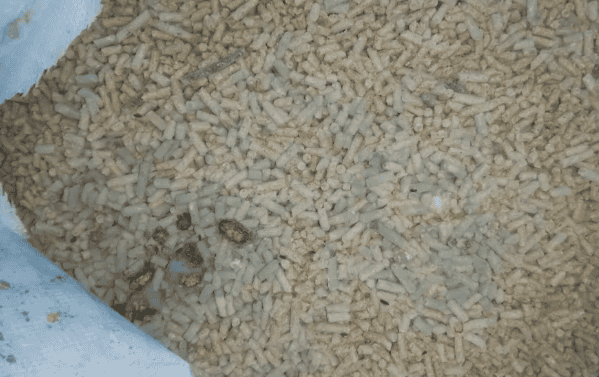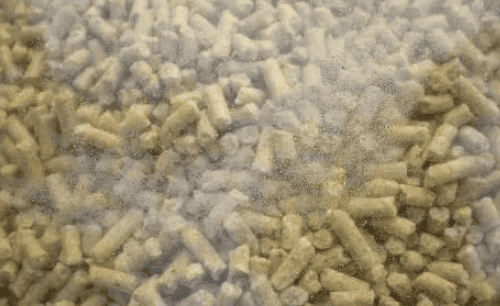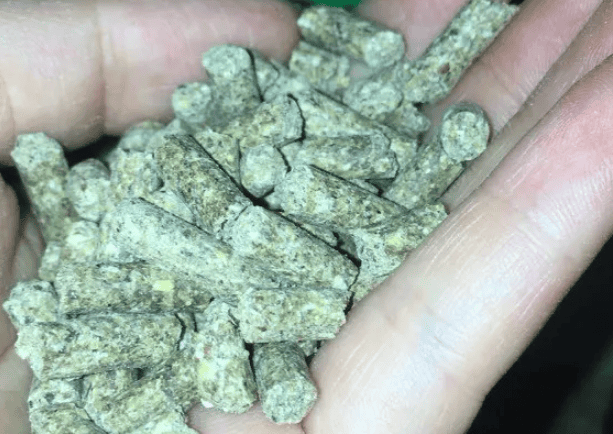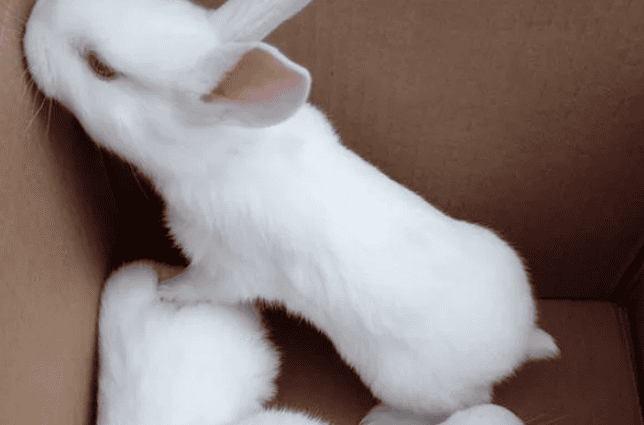As the temperature rises, a long-standing problem begins to appear - feed mildew. Feed mildew has always been one of the major problems causing significant losses in rabbit feed production and rabbit breeding. Rabbits have a sensitive constitution and weak resistance, and are especially sensitive to mycotoxins. If the feed is slightly moldy, it will be mild. The production performance of rabbits is affected, and in severe cases, abortion or premature birth may occur, causing serious economic losses.

1. Causes of feed mold infection
1. Feed raw materials are moldy. Mildew of grass powder often occurs, such as peanut seedlings, sweet potato seedlings, corn stalks, alfalfa grass, oat grass, etc., which are affected by rain during the drying process after harvesting or during the storage of straw bales and grass powder. Mildew due to moisture.
2. When using a small pellet feed machine to make homemade ingredients, a certain amount of water needs to be added. If it is not fully dried and stored for a long time, mold will occur.
3. The farm purchased too much pellet feed at one time and did not consume it for a long period of time (the general storage time of pellet feed is 45 days in summer and 60 days in winter), and no measures were taken during the storage process. Moisture-proof measures: stack feed directly on the ground or close to the wall to absorb moisture in the air and cause mold.
4. Too much feed is fed at one time. The rabbit does not consume the feed and refills it repeatedly. The feed box is not cleaned for a long time, causing the bottom feed to absorb moisture and become moldy.


3. Symptoms and treatment measures of rabbit feed mold poisoning
Clinical symptoms: Once Due to various reasons, rabbits that eat feed containing mold will show the following symptoms in a short period of time; sick rabbits will show depression, slowness, immobility, abdominal distension, fishy and smelly soft stools in the early stage or loose stools and pellets in the later stage. Smaller size and no longer defecation, drooling at the mouth, cold limbs, and cyanosis of the eyes.
Anatomical symptoms: dark purple liver, gallbladder fullness increased several times, gastric bloating, food in the stomach in the early stage of the disease and only a thin mixture of water and chyme in the later stage, detachment of gastric mucosa and severe gastric wall thinning. Gastric ulcer, the small intestine is filled with yellow mucus or thin chyme with bubbles, and in severe cases, small intestinal dilation, intestinal mucosal serosal bleeding, cecal tympanic secretion, intestinal mucosal shedding, and mesenteric lymph node edema.

Treatment measures: Once abdominal distension caused by mycotoxins occurs in rabbit farms, the following measures should be taken immediately.
① Stop feeding the problematic feed, analyze the reasons, find out the feed batch number, storage time and method, and replace it with good quality feed.
② Carry out targeted treatment for rabbits: add probiotics, EM and multivitamins to the drinking water, and feed green feed to alleviate the disease and repair the mucosa of the digestive tract.
③ Make prescription feed and add toxin adsorbents such as montmorillonite powder and antibiotics such as enrofloxacin to the feed. Ciprofloxacin, enramycin, etc. Add soluble mold remover to drinking water.
④ Methods such as support, protection, detoxification, detoxification and bacteriostasis can be adopted for infected rabbits.
Supportive therapy can include intravenous injection of 20-40 ml of 25% glucose twice a day until recovery. Dispersible vitamins (such as Subu-14, Weibu-18, etc.) can be used in drinking water. Add 1.5 times the indicated amount for 5 consecutive days. You can also take 50 to 100 ml of 10% sugar water orally. Subcutaneous injection of 0.5 to 1 ml of sodium sodium and potassium to enhance heart function; for protection and detoxification, 20 grams of starch can be boiled into a paste with water, and 5 to 6 grams of sodium sulfate is added for oral administration to protect the intestinal mucosa and reduce the absorption and absorption of poisons. Increase excretion; detoxify by injecting 3 to 5 ml of vitamin C twice a day for 3 consecutive days. Combined with certain hepatoprotective drugs. To inhibit bacteria, certain drugs that are highly sensitive to molds can be fed, such as nystatin, clotrimazole and allicin. For rabbits that are generally affected, as long as they stop feeding moldy feed and feed antifungal drugs, they can recover quickly. By taking the above measures, the condition can be controlled after 3 days, and the symptoms of most mildly ill rabbits disappear. Folks also use crushed garlic and feed it, 2 grams per rabbit, twice a day.

 扫一扫微信交流
扫一扫微信交流
发布评论